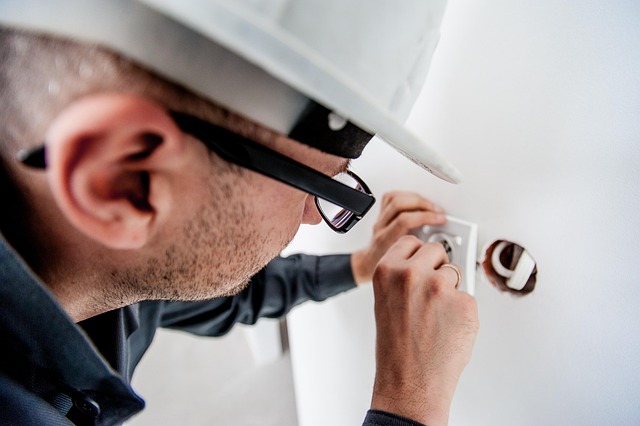Fuses and circuit breakers are vital safety components in electrical systems, with fuses protecting against overcurrent by melting and breaking circuits, while circuit breakers automatically disconnect power during abnormal conditions. This guide for electricians explains how to replace old fuses with modern circuit breakers, emphasizing safety. It covers power disconnection, identifying faulty fuses, selecting new breakers, installation, testing, and the benefits of advanced safety features in modern circuit breakers.
Looking to upgrade your home’s electrical safety? It’s time to replace those old fuses with modern circuit breakers. This comprehensive guide delves into the world of electrical components, helping you understand the key differences between fuses and circuit breakers. With a step-by-step process, an electrician demonstrates how to safely and effectively replace outdated fuses, ensuring a more efficient and secure electrical system. Discover why this simple upgrade is a game-changer for your home’s electrical safety.
- Understanding Fuses and Circuit Breakers: A Comparison
- Step-by-Step Guide: Replacing Old Fuses with Modern Circuit Breakers by an Electrician
Understanding Fuses and Circuit Breakers: A Comparison

Fuses and circuit breakers are both vital safety components in electrical systems, but they serve distinct purposes. A fuse is a thin strip of metal designed to protect an electrical circuit by melting and breaking the connection when an excessive current flows through it. This action prevents overloading and potential fires caused by short circuits. On the other hand, a circuit breaker is a switch that trips or ‘breaks’ automatically in response to abnormal electrical conditions like overcurrent or short circuits, thereby disconnecting power.
While fuses have been widely used for many years, they have limitations. They need to be replaced once they blow, and the process involves removing the old fuse and installing a new one. Circuit breakers, however, offer a more efficient solution. They are easily reset by simply flipping a switch, allowing for quick restoration of power after an interruption. This makes them a preferred choice among electricians due to their convenience and effectiveness in modern electrical installations.
Step-by-Step Guide: Replacing Old Fuses with Modern Circuit Breakers by an Electrician

Electrician’s Guide to Replacing Old Fuses with Modern Circuit Breakers
Step 1: Safety First. Before beginning, ensure power is disconnected at the main circuit breaker or fuse box. Test for voltage with a multimeter to confirm. Wear appropriate personal protective equipment (PPE), including gloves and safety glasses.
Step 2: Locate the Old Fuse. Identify the faulty circuit and locate the old fuse. Fuses are usually labeled, indicating their amperage rating and type. Check for any signs of overheating or damage. Remove the old fuse by unscrewing it from its holder using a flathead screwdriver.
Step 3: Select the Modern Circuit Breaker. Choose a modern circuit breaker that matches the old fuse’s amperage rating and type. Ensure it is compatible with your electrical system. Newer circuit breakers offer enhanced safety features like automatic shut-off and faster tripping times.
Step 4: Install the New Circuit Breaker. Insert the new circuit breaker into the holder, ensuring proper alignment of the terminals. Tighten the screw securely but do not overtighten. Double-check that the circuit breaker is in the ‘OFF’ position before restoring power.
Step 5: Test and Verify. After re-establishing power, test the circuit to ensure the new circuit breaker operates correctly. Check for any unusual sounds or smells, indicating a potential problem. Regularly inspect your electrical system to prevent future issues and ensure the safety of your home.
When it comes to modernizing your electrical system, replacing old fuses with advanced circuit breakers is a game-changer. This simple upgrade, often handled by a professional electrician, offers enhanced safety and convenience. By understanding the differences between these components and following a structured guide, homeowners can ensure their electrical infrastructure is well-protected and up-to-date, promoting both efficiency and peace of mind.
